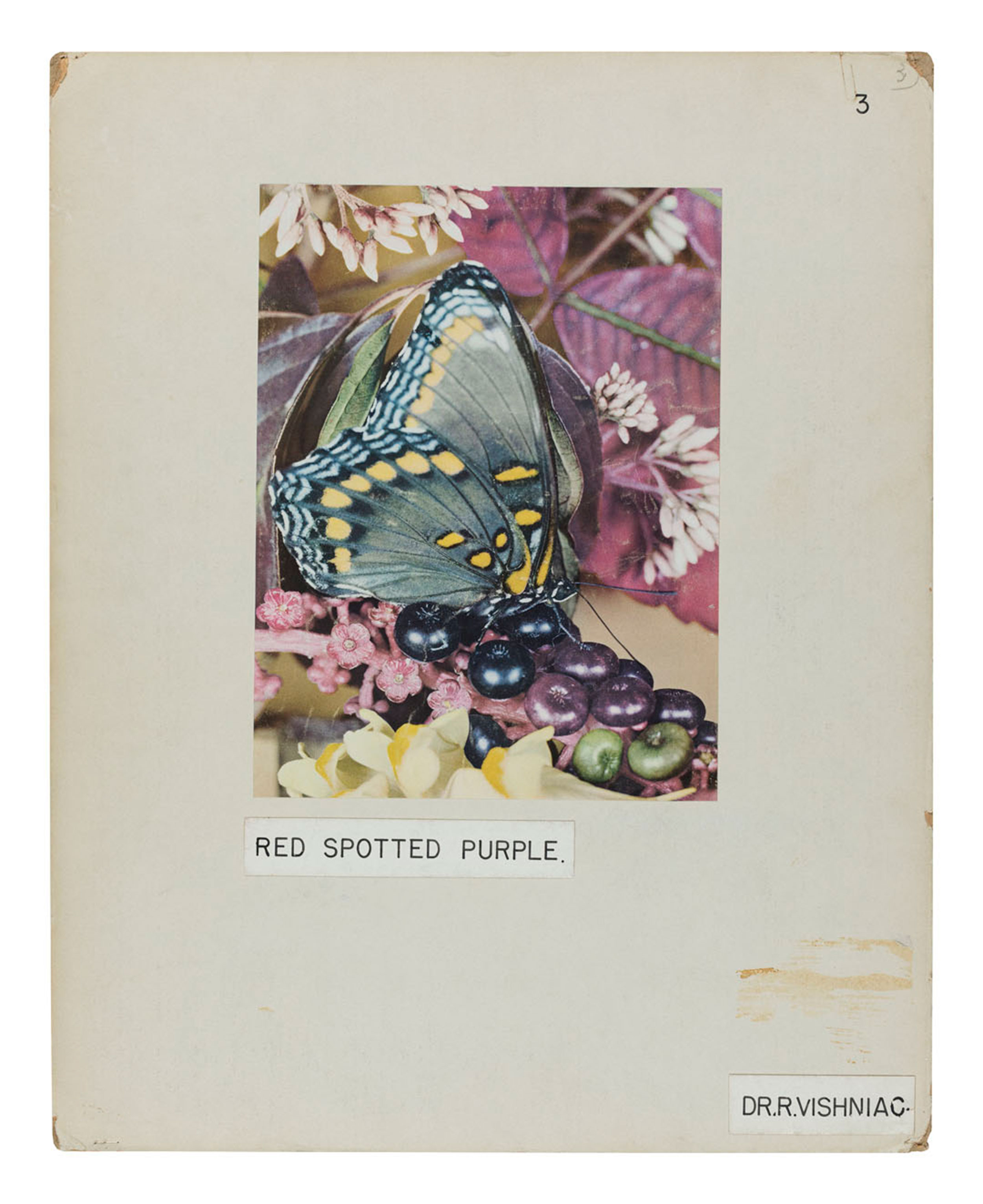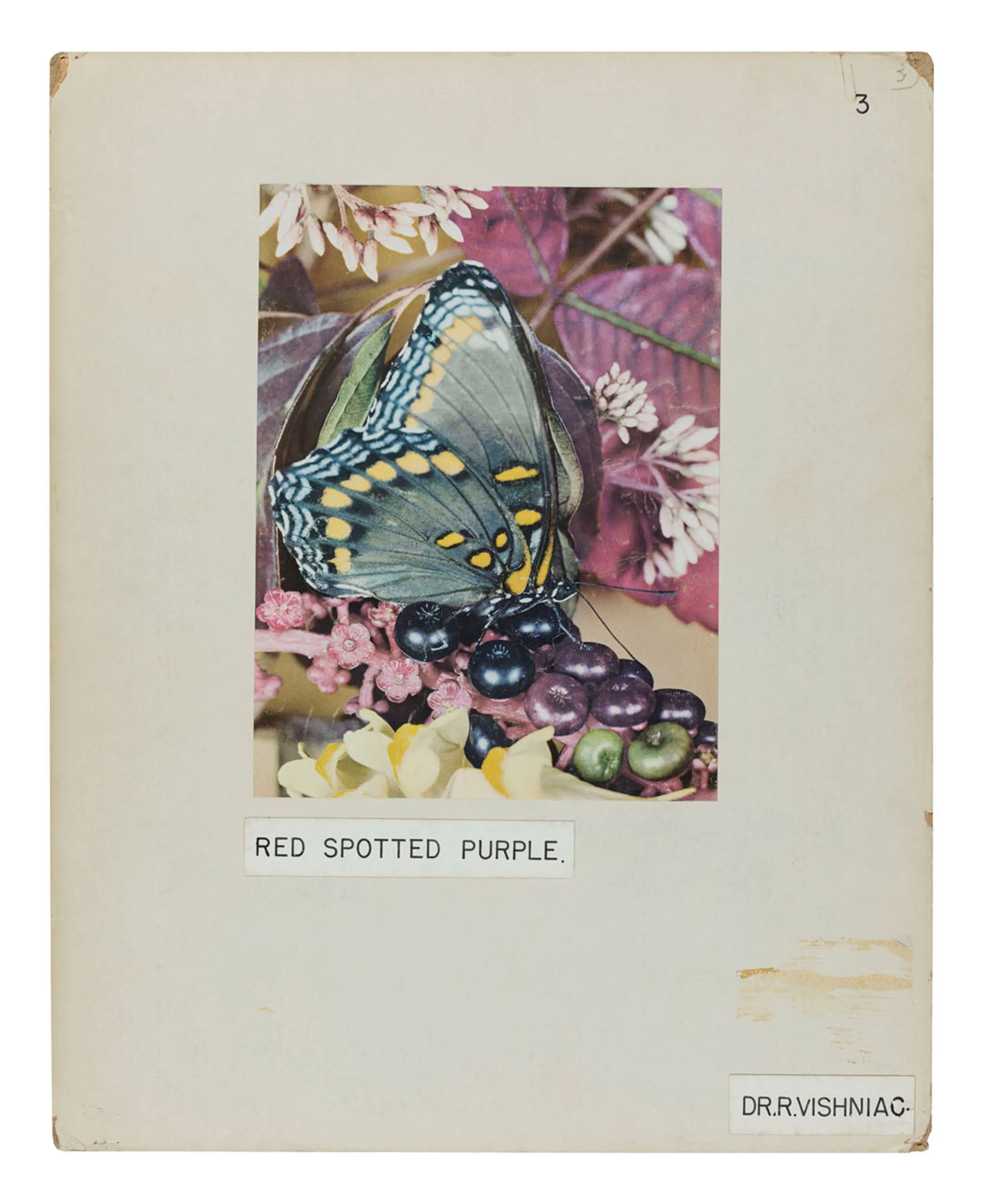
ON VIEW
August 2–October 27, 2017
Monday–Friday | 10 AM–5 PM | Open by appointment: [email protected]
Monday, Wednesday | 1–4 PM | Open to the public. (No appointment necessary.)
LOCATION
ICP at Mana
888 Newark Avenue, 6th Floor
Jersey City, NJ 07306
MANA CONTEMPORARY OPEN HOUSE
Sunday, October 15
The International Center of Photography (ICP), the world’s leading institution dedicated to photography and visual culture, announces “Red Spotted Purple”: Roman Vishniac’s Science Work, a special exhibition organized by ICP at Mana’s first-ever Artist-in-Residence, Claudia Sohrens. Presented at the ICP gallery at Mana Contemporary, “Red Spotted Purple” will be on view from August 2 through October 27, 2017.
As part of her Artist-in-Residence position, Sohrens was given unfettered access to the ICP Collections and invited to mine its archives. The result: Sohrens’ discovery of the images in “Red Spotted Purple”—a little-known body of work by photographer Roman Vishniac (1897–1990).
Sohrens became enchanted by Vishniac’s mounted scientific prints, which had been used as display boards by scientific societies and research institutes, and she was drawn to the wordplay and poetry of his captions. Featuring 14 rarely seen Vishniac works, this exhibition explores the physical traces of the archive as well as broader questions about originality and authorship.
“Vishniac’s use of language and choice of words for labels and captions for some of his black-and-white images transformed a sense of aspiration toward solid or clear comprehension into poetry,” says Sohrens. “It encouraged me to look at his work and the relation between word and image in a new and different way, in which neither terms like ‘label and caption’ nor ‘collage and photomontage’ adequately describe his formal and iconographic boards. The poetic relationship between photography and language, and the binary of art and science are part of the discovery I would like to share in the exhibition to generate renewed interest in this part of his work.”
The International Center of Photography at Mana Contemporary is a 15,000-square-foot space that houses a gallery, media lab, research area, and the ICP Collections. The gallery space is located at 888 Newark Avenue in Jersey City, NJ. The Mana gallery is open on Mondays and Wednesdays from 1 to 4 PM and by appointment: [email protected].
About Claudia Sohrens
German-born Claudia Sohrens is currently faculty at the International Center for Photography and the Pratt Institute. She has been a mentor for NYFA’s Immigrant Artist Program since 2011, and at present she is a teaching artist for Expanded Art Ideas with Artists Space and at BRIC Arts and Media. Sohrens received an MA in Media and Communications from the European Graduate School in Switzerland (EGS), where she is a PhD candidate in Media and Communications. Her accolades include the 2010 NYFA Fellowship for Photography and the 2014–15 A.I.R. Fellowship, and her work has been exhibited in New York and internationally.
About Roman Vishniac
Born in Russia in 1897, Vishniac immigrated to Berlin in 1920 in the aftermath of the Russian Revolution. As an amateur photographer, he took to the streets with his camera throughout the 1920s and ’30s, offering astute, often humorous visual commentary on his adopted city and experimented with new and modern approaches to framing and composition. Documenting the rise of Nazi power, he focused his lens on the signs of oppression and doom that soon formed the backdrop of his Berlin street photography. From ca. 1935 to 1938, while living in Berlin and pursuing his lifelong interests in zoology, biology and science photography, he was commissioned by the Jewish Joint Distribution Committee (JDC), the world’s largest Jewish relief organization, to photograph impoverished Jewish communities in central and eastern Europe. On New Year’s Eve, 1940, he arrived in New York City and soon opened a portrait studio. At the same time, he began documenting American Jewish communal and immigrant life and established himself as a pioneer in the field of photo microscopy. In 1947, Vishniac returned to Europe and documented Jewish Displaced Persons camps and the ruins of Berlin. During this time, he also recorded the efforts of Holocaust survivors to rebuild their lives, and the work of the JDC and other Jewish relief organizations in providing them with aid and emigration assistance. From his arrival in the United States through the 1970s, Vishniac also continued to pursue his lifelong passion for photomicroscopy, capturing unique images of the microscopic world and establishing himself as a pioneer in the field.
About ICP
The International Center of Photography (ICP) is the world’s leading institution dedicated to photography and visual culture. Cornell Capa founded ICP in 1974 to preserve the legacy of “concerned photography”—the creation of socially and politically minded images that have the potential to educate and change the world—and the center’s mission endures today, even as the photographic medium and imagemaking practices have evolved. Through its exhibitions, school, public programs, and community outreach, ICP offers an open forum for dialogue about the role that photographs, videos, and new media play in our society. To date, it has presented more than 700 exhibitions and offered thousands of classes at every level. ICP brings together photographers, artists, students, and scholars to create and interpret the realm of the image. Here, members of this unique community are encouraged to explore photography and visual culture as mediums of empowerment and as catalysts for wide-reaching social change. Visit icp.org/concerned to learn more.
Media Contact
Meryl Cooper, [email protected], 917.974.0022


